
The E100 is a fascinating, elusive superheavy tank developed by Germany during the Second World War. At 136 tons its only beaten by the Maus, but the E100 carried the same 128 mm gun on a smaller platform that weighed 60 tons less. Made famous by World of Tanks, the E100 was more than just a blueprint design as many think; it was actually built.
It is often regarded as a competitor to Porsche’s mighty Maus, which it both was and wasn’t, but the E100’s development is long, complicated and at points filled with drama, as its original plans were essentially stolen and given to another company.
This is the story of one of the world’s only true superheavy tanks.
Background
In 1942 the German company Porsche was given a contract to produce a tank in the 100-ton range. This was a huge undertaking, as it would be bigger, heavier and better protected than any tank that had ever been made before.
The quest for such a tank would see Porsche creating a number of different designs, each becoming increasingly heavy and complex. Starting as the Mäuschen (‘little mouse’), it eventually became known by the now-famous name: Maus.
The Maus hardly needs an introduction, it is the heaviest tank ever built at 207 tons (188 tonnes) and also one of the biggest. However, during its development things did not go well for Porsche. Its weight was ballooning, and most components had to be custom-built specifically for the tank. This caused hefty delays, and its weight would certainly be a long-term source of trouble if it ever entered service.
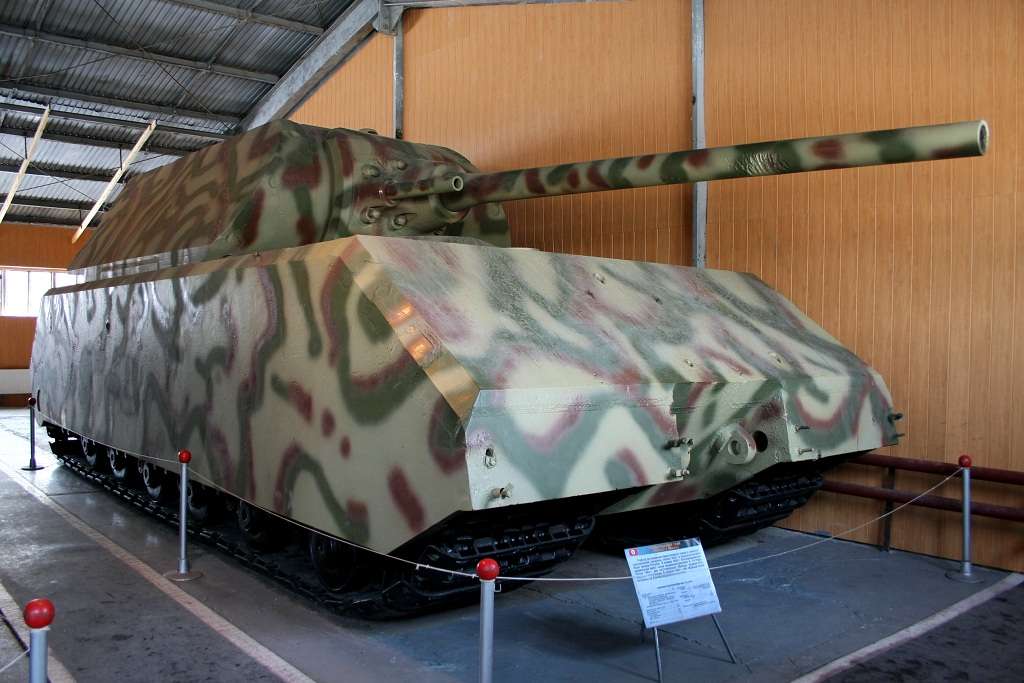
Toward the end of 1942, Krupp, the company designing the Maus’ turret, would rapidly create a design of their own to compete against Porsche’s tank. Krupp put a major focus on making a lighter vehicle and shortening the development process by reducing the tank’s armor and using as many components from the Tiger II as possible.
The resulting proposal was known as the Tiger-Maus. This design weighed 130 tons, was powered by the same Maybach HL 230 used in the Tiger II and was armed with a 150 mm main gun, with a 75 mm gun as a coaxial.
The Tiger-Maus was 40 tons lighter than Porsche’s Maus and was a more conventional layout with many components from the Tiger II. One of the main issues Krupp encountered was finding a suitable turret. The Maus’ turret was simply too heavy and large for use on the Tiger-Maus.
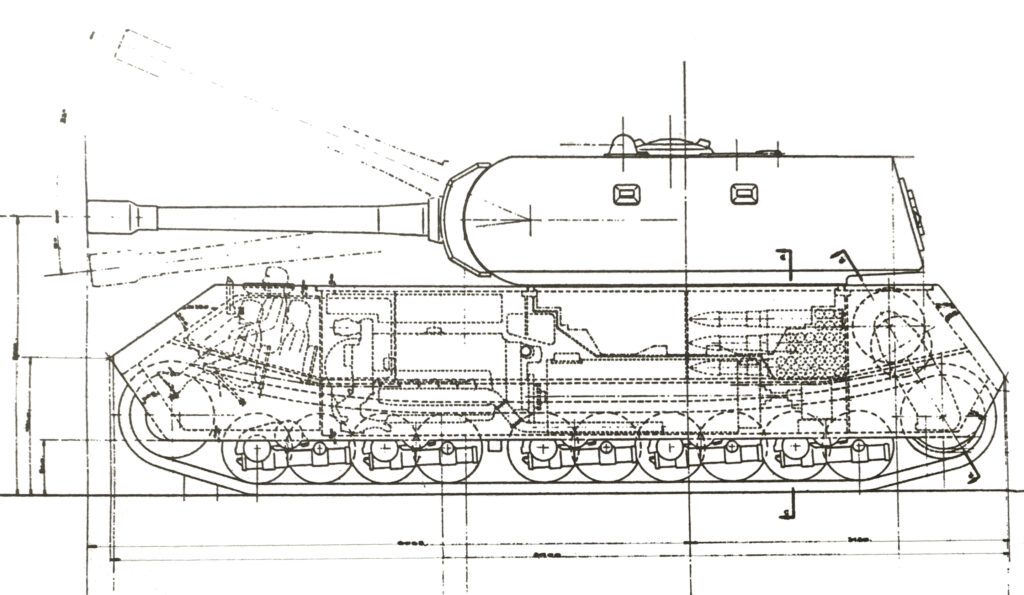
Despite being a more promising design, in a meeting in January 1943 Hitler declared that Porsche’s tank would enter production, not Krupp’s. As a result, Krupp stopped work on their Tiger-Maus, and Porsche continued on and actually produced a few examples of the Maus.
However, unbeknownst to Krupp, Ernst Kniekampf (an influential official in Wa Pruef 6, the office in charge of the development of new tanks) had secretly handed over Krupp’s plans for the Tiger-Maus to Adler in the spring of 1943. Adler had little experience in tank development, especially on the scale of a tank like the Tiger-Maus.
E100 Development
Adler’s vehicle, named the E100, was almost entirely based on the Tiger-Maus. It was to fit in with Kniekampf’s concept of standardizing components between tanks, which would then be separated by weight classes.
Staff at Adler started work on the E100 in June 1943, but as it was not an official program it received very few resources and took a long time to show any progress.
Read More Char 2C – The Biggest Operational Tank Ever Built
It wasn’t until spring 1944 that Krupp discovered their design had been secretly handed to Adler, and was, unsurprisingly, very unhappy about it. Kniekampf claimed the decision had been made because Krupp was overloaded with work.
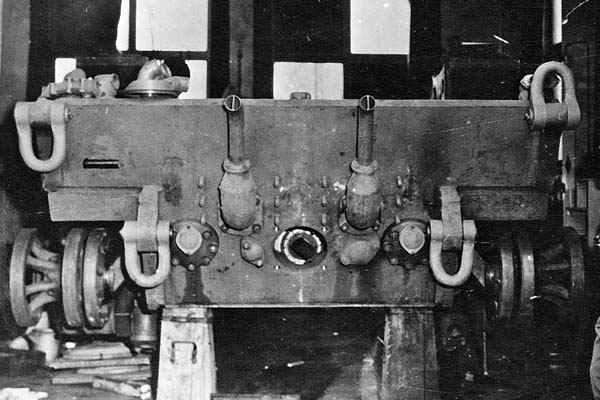
But, ironically, Krupp would still design the turret for the E100. This was mostly the same as the recently-designed Maus II Turm, which was initially made as an improved turret for the Maus. The shape differed significantly from the Maus, discarding the iconic curved front for a flat plate angled back at 30 degrees.
It contained 128 mm and 75 mm guns, but unlike the previous Maus turret, which had its guns positioned side-by-side, the Maus II Turm’s guns were in an under-and-over position. It also had a rangefinder on the roof.
For the E100 this turret remained mostly the same, but it had thinner armor to reduce weight.
The assembly of a single E100 chassis was taking place near Paderborn in Germany, but only three Adler employees were working on it full-time. Despite this, by the start of 1945 much of the hull had been completed, with the suspension, wheels, and most internal fittings present.
Disruptions in materials and parts, like fuel lines and suspension coil springs, meant the rest had not yet been completed. However, there was no turret for the chassis and no sign of one in the near future.
The E100
Please bare in mind that any of the specifications and features we cover here may have varied on an actual production model, as the E100 was never completed and never fitted with a turret.
Like the Maus, the E100 was an absolutely enormous machine.
The E100 was actually quite a bit shorter than the Maus at 8.7 meters (excluding the gun), but was significantly wider at 4.5 meters (compared to 3.7 for the Maus). However, thanks to the E100’s removable side skirts and ability to fit transport tracks, its width could be reduced to just over 3 meters. This meant that it would have been possible to transport the E100 on standard railways without disruptions.
As a superheavy tank, the E100 unsurprisingly carried immense armor, which, in places, would have been impenetrable to all anti-tank guns fielded during the Second World War.
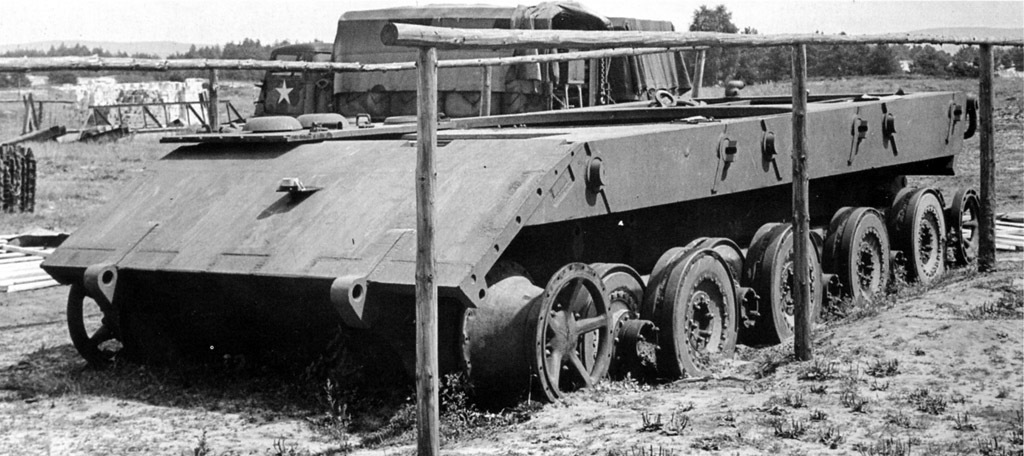
The front of the hull was 200 mm thick, and angled at 60 degrees. This combination resulted in an effective thickness of an incredible 400 mm! This would have been a challenge even for Cold War tanks. The sides were 120 mm thick, with the upper half covered by the removable side skirts that were 75 mm thick, for a total thickness of 195 mm.
Read More Germany’s Nashorn Tank Destroyer with an 88 mm
Even the rear was 150 mm thick and angled at 30 degrees. Its safe to say that the E100’s hull would have been tremendously difficulty to pierce with any anti-tank gun then in service.

In contrast though, the E100’s turret protection was rather underwhelming. The front plate was 200 mm thick angled at 30 degrees, for an effective thickness of 230 mm. The rear was certainly respectable at 150 mm at 15 degrees, however, the sides were a paltry 80 mm thick.
This means that the E100’s turret sides were the same thickness as the Tiger I, albeit they were angled at 30 degrees on the E100. This significant weak point on one of the largest sections of the tank is puzzling, but it is likely a result of the desperate need to reduce the turret’s weight.
The 150 mm thick rear turret plate may have doubled as a counterweight to balance the huge mass of the gun and armor at the front. The turret roof was 40 mm thick, and this area also featured a rangefinder inside a square bar that ran across the width of the turret.
Armament was virtually the same as the Maus, with a 128 mm main gun and a 75 mm coaxial gun. In the E100 though the 75 mm was mounted above the main gun, and required a side-ways moving breech for loading.
Interestingly, the E100’s turret was not big enough to accommodate the 128 mm gun, so the gun’s mounting had to be moved forward to the outside of the turret. The guns and trunnions were protected by a large armored mantlet.
All of this culminated in a tank that weighed a monstrous 136 tons (123 tonnes). Supporting all this weight were one-meter wide combat tracks. For transport, these would be swapped with a thinner set to reduce the tank’s width.
The biggest weakness in the E100’s design though was easily its engine. For a tank of this size, you’d expect a huge engine delivering well over 1,000 hp, like in the Maus. This was not the case for the E100 though, as it was fitted with the same 600 hp HL 230 P30 used in the 50 ton Panther.
To be fair to the engineers, the E100 was designed under the expectation that a more powerful HL 230 with around 1,000 hp would have arrived in the future – although we now know that this would have been unlikely.
As a result, the E100 had a power-to-weight ratio of 4.4 hp per ton, and an abysmal top speed of 14 mph (23 kph).
A crew of six would have operated this lumbering beast; commander, gunner, two loaders, radio operator and driver.
The E100’s Fate
When the war ended the E100 chassis was mostly complete, with its tracks and side skirts present and ready to be fitted. A turret for the E100 was never made, so the chassis was all Germany had to show for this mighty superheavy tank.
The single chassis was discovered by the Allies in 1945 and subsequently shipped back to the UK for extensive analysis. At some point its tracks were fitted, as this is seen in an image taken after its capture.
Many of the original plans for the E100 were burnt at the end of the war by Adler, but shortly after its capture the Allies instructed Adler employees to recreate some of these drawings. During this, one drawing was made that showed the E100 with a very early turret originally designed in 1942 for the Maus.
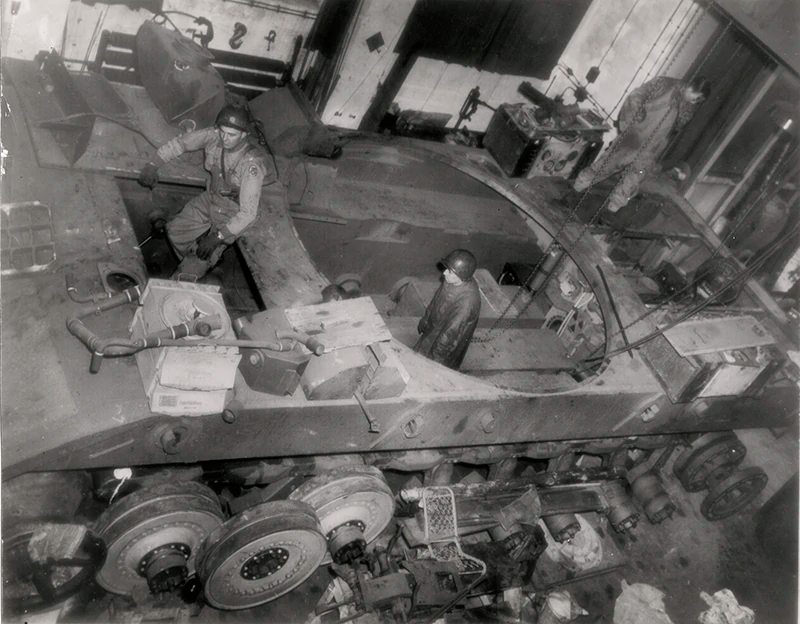
While this certainly complicates the E100’s story regarding its turret, its likely a mistake made by employees copying from older, undamaged drawings to fulfill the Allies’ requests. Interestingly, the game Warthunder features the E100, but with a Maus-style turret. Meanwhile, the game World of Tanks actually depicts the E100 with the more likely Maus II Turm with a flat front.
After being inspected and running out of use, the E100 chassis was tragically scrapped.
However, this may not be the end of the E100’s story. There have been some rumors over the years that the hull was not actually scrapped, but instead buried under a scrapyard in Portsmouth, UK, when it became unprofitable to cut it up.




